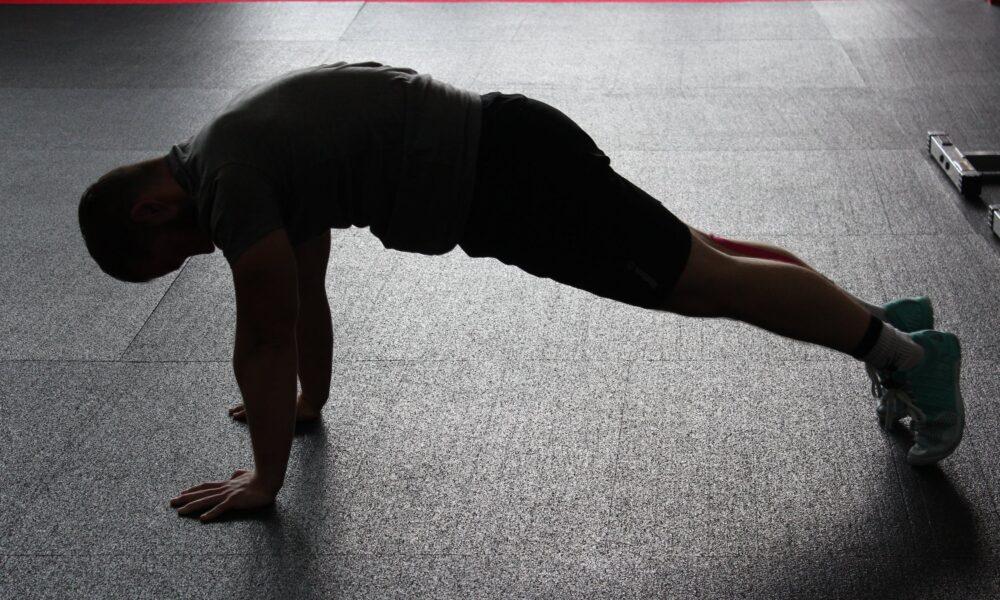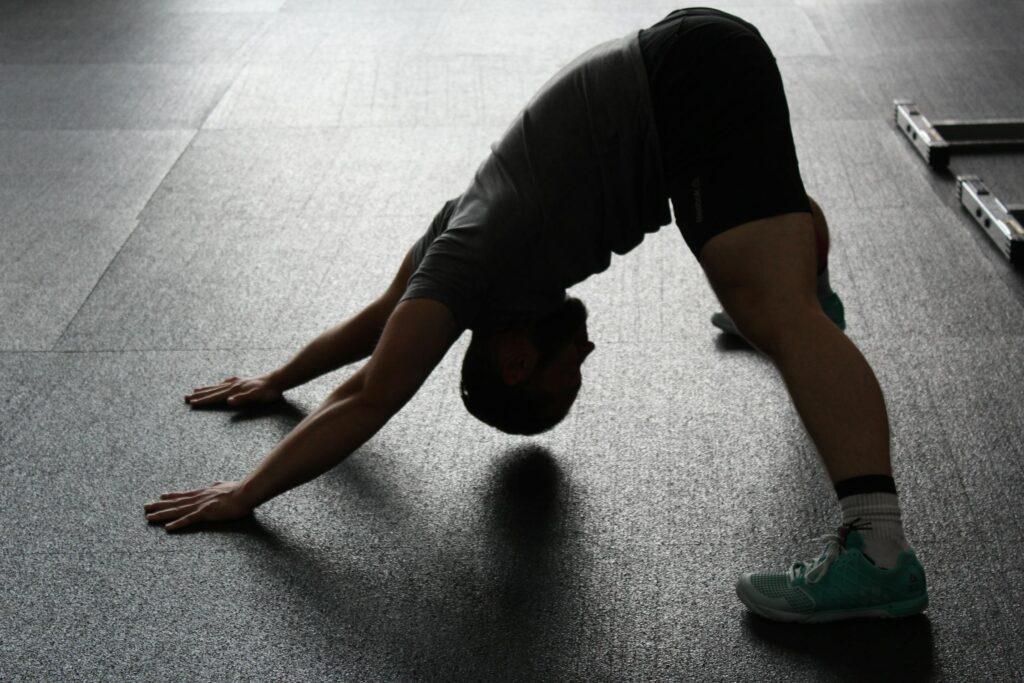

When you experience delayed onset muscle soreness, inflammation, or even muscle damage after a strenuous workout in the gym, you may be tempted to lounge on the couch or just lay down and rest to allow the muscles to heal.
While passive recovery is one way of healing, research shows it may not be the best way to recover. Instead, engaging in active recovery that involves low-impact exercises or activities is the way to go.
Active recovery promotes blood circulation, facilitates muscle repair, and alleviates post-workout stiffness during your rest day. All this ensures you can bounce back quicker to the gym, reduce muscle soreness, and improve overall performance.
This article takes you through everything you need to know about active recovery, including the benefits, the best active recovery exercises you should consider, and how to do them.
What is Active Recovery?
Active recovery is recovering from intense workouts using low-intensity exercises during your resting days. Instead of being passive, you engage in light exercises like jogging, swimming, cycling, or yoga to optimize your healing process.
As a bodybuilder, active recovery should be one of the most essential components of your training routine. It will help you get the most out of your fitness program by flushing out metabolic waste products, such as lactic acid, that accumulate during intense exercise so that you can recover faster.
Active recovery exercises also encourage a steady flow of oxygen-rich blood to the muscles to prevent muscle tightness and improve flexibility.
Active Recovery Vs Passive
Most people find it difficult to differentiate between passive and active recovery methods because they all facilitate the body’s recovery after exercise. But the difference is straightforward.
Active recovery involves engaging in low-intensity exercise or movement following a strenuous workout or competition. Instead of complete rest, you perform light physical activity to promote circulation, reduce muscle stiffness, and accelerate removing metabolic waste products from the muscles.
Common examples of active recovery activities include walking, jogging, cycling, swimming, yoga, or dynamic stretching.
Passive recovery, however, involves complete rest or minimal physical activity following intense exercise. During passive recovery, you abstain from structured training and instead focus on restorative practices such as hydration, nutrition, sleep, and relaxation techniques. It may involve massage, contrast baths, or simply resting and recuperating.

Benefits of Active Recovery
Active recovery is a crucial component in the training routine of bodybuilders. It brings many benefits that contribute to overall well-being and improved performance.
Here are seven critical reasons for incorporating active recovery into your workout routine.
1. Enhanced Muscle Recovery
Training with active recovery exercises on your rest day will promote blood circulation throughout your body, delivering oxygen and nutrients necessary for repair and recovery and help flush out metabolic waste products, such as lactic acid, that build up after an intense workout. This allows your muscles to recover faster.
2. Reduced Muscle Stiffness
After intense exercise, muscles are likely to become tight and stiff. Active recovery through gentle movements helps to alleviate muscle stiffness and maintain flexibility.
Low-intensity workouts like stretching also increase the range of motion and prevent muscle tightness, which enhances workout performance and reduces the risk of injury.
3. Mental and Emotional Restoration
Beyond being beneficial for the body, active recovery is also good for the mind. Engaging in light physical activity like yoga releases endorphins, the body’s natural feel-good hormones. Endorphin hormones help to reduce stress, elevate mood, and improve mental clarity.
The activities also help lower levels of stress hormones like cortisol. This reduction in stress hormones can lead to relaxation and overall well-being.
4. Injury Prevention
Incorporating active recovery workouts into your routine can help prevent injuries caused by overuse or muscle imbalances. They can help maintain proper muscle balance, improve joint stability, and address any muscle imbalances that may lead to injury.
Active recovery also helps to reinforce proper movement patterns, reducing the risk of compensatory movements during training.
5. Improved Flexibility
Active recovery exercises, such as yoga or dynamic stretching, can significantly improve flexibility, which is crucial for your fitness training. It helps to lengthen and strengthen muscles, increase joint mobility, and improve overall body alignment when you do it regularly on your rest days.
6. Improved Performance
Active recovery allows you to maintain an active lifestyle even on rest or recovery days, ensuring consistent physical activity without overexertion. By avoiding prolonged periods of inactivity, you can sustain cardiovascular fitness, muscular endurance, and power, ultimately enhancing your overall performance during intense workouts.
Precautions to Take When Doing Active Recovery Exercise
Below are four precautions you should take before performing active recovery workouts.
1. Avoid Overexertion
Active recovery should be gentle and low-impact to facilitate muscle recovery rather than adding stress to the body. Avoid pushing yourself to the point of exhaustion or fatigue. Instead, choose a low-intensity workout that you can do at a heart rate of 30-60% of your maximum heart rate. The goal is to promote circulation, mobility, and relaxation, not to push your limits.
2. Choose Active Recovery Workouts You Enjoy
Whether walking, cycling, swimming, yoga, or dancing, selecting activities that align with your interests and preferences can make your recovery sessions more enjoyable and sustainable in the long run. So, choose active recovery strategies you genuinely enjoy and look forward to.
3. Plan in advance
Before beginning any active recovery routine, plan your session. Determine the duration, intensity, and type of activity you’ll be performing, considering factors such as your current fitness level, recovery needs, and any existing injuries or limitations.
A clear plan ensures that your active recovery session aligns with your goals and promotes optimal recovery without risking overexertion or injury.
4. Avoid active Recovery If You Have Injury or Pain
While active recovery can be beneficial for promoting and maintaining muscle gains, it’s essential to listen to your body and avoid activities that exacerbate existing injuries or cause pain.
If you’re experiencing discomfort or have a specific injury, consult a healthcare professional before engaging in active recovery exercises. They can guide suitable activities and modifications to ensure safe and effective recovery without risking further injury.
9 Simple Active Recovery Workouts to Consider
Below are the top nine active recovery techniques to help you build and maintain muscle gains. These workouts include:

1. Walking
A walk is an excellent active recovery exercise that promotes blood flow, aids in the removal of metabolic waste products from the muscles, and helps reduce stiffness. Aim for a 20-30-minute stroll to maintain your muscle gains.
2. Foam Rolling
Foam rolling is a form of self-myofascial release that helps reduce muscle tension, improve flexibility, and alleviate soreness. If your muscles are painful and sore, use a foam roller to target tight or tender areas in the muscles, rolling back and forth slowly to release tension and promote recovery.
3. Swimming
Swimming is a full-body workout that offers gentle resistance and promotes joint mobility without stressing muscles and joints. It also involves a wide range of motion and engages multiple muscle groups simultaneously. This active stretching can help alleviate muscle tightness and improve flexibility, which is beneficial for recovery and injury prevention.
Engage in a relaxed swim session, focusing on smooth, rhythmic strokes for 20-30 minutes to enhance recovery and relaxation.
4. Jogging
Jogging is a low-intensity cardiovascular exercise that can help increase blood flow to muscles, promoting muscle recovery. It also helps in flushing out metabolic waste products accumulated during intense workouts.
A light jog for 10-20 minutes can be an effective active recovery activity.
5. Cycling
Cycling at a moderate pace on a stationary bike or outdoors provides a low-impact cardiovascular workout that promotes blood circulation throughout the body, which helps deliver oxygen and nutrients to muscles, aiding in their recovery and repair processes.
Adjust the resistance and speed to maintain a comfortable intensity level while pedaling for 20-30 minutes.

6. Stretch
Stretching promotes muscle lengthening and flexibility, which can enhance mobility and range of motion. This increased flexibility can aid in performing exercises with proper form, reducing the risk of injury and enabling better muscle engagement during workouts.
Stretching after a workout can also help alleviate muscle soreness and stiffness by increasing muscle blood flow and promoting the removal of metabolic waste products. This can expedite recovery and allow a quicker return to training at full capacity.
While performing them, focus on mobility and range of motion for 10-15 minutes to prepare the body for movement and enhance recovery.
7. Yoga
Yoga combines gentle stretching, breathing exercises, and relaxation techniques to promote flexibility, mobility, and stress relief. It can aid in recovery by promoting relaxation, reducing muscle tension, and increasing blood flow to help flush out metabolic waste products.
Practice a series of yoga poses targeting the major muscle groups, focusing on deep breathing and mindful movement for 20-30 minutes to unwind and rejuvenate the body.
8. Lateral Band Walk
Lateral band walk is a resistance band exercise targeting the muscles of the hips, particularly the glutes and abductors. It helps strengthen the muscles responsible for hip stability and improves overall lower body strength. To perform lateral band walk:
- Place a resistance band around your thighs, just above your knees.
- Stand with your feet shoulder-width apart and slightly bend your knees.
- Step to the side with one foot, maintaining tension on the band.
- Follow with the other foot, bringing it back to shoulder-width distance.
- Continue stepping 10-15 steps each sideways, keeping tension on the band and maintaining a slight knee bend throughout the movement.
Conclusion
Active recovery is a valuable tool for athletes and fitness enthusiasts, bridging intense workouts and optimal performance. Incorporating low-impact workouts like foam rolling, stretching, walking, and jogging into your routine can enhance muscle recovery, flexibility, mental and emotional restoration, injury prevention, and performance.
However, active recovery should not replace adequate rest and sleep. It complements rest days within a training program. Proper nutrition, hydration, listening to your body’s signals and prioritizing sleep are also crucial.
Embrace the power of active recovery to optimize your fitness journey and achieve balanced and sustainable muscle gains.





















You must be logged in to post a comment Login